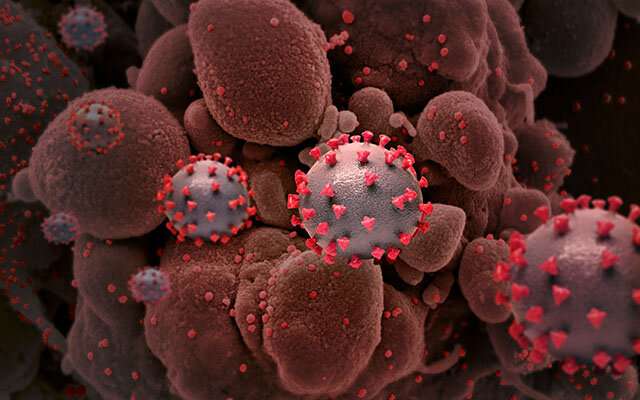
Investigators at Cedars-Sinai have proposed a theory for how SARS-CoV-2, the virus that causes COVID-19, infects the body. Their hypothesis, published in Frontiers in Immunology, could explain why some people still have symptoms long after the initial infection.
“We’ve put together different pieces of data to create a bigger picture that may explain what causes some people’s immune systems to go haywire, leading to post-acute syndromes, including multisystem inflammatory syndrome in children (MIS-C) and long COVID in children and adults,” said Moshe Arditi, MD, executive vice chair of the Department of Pediatrics for Research, part of Cedars-Sinai Guerin Children’s, and senior author of the paper.
MIS-C is a rare but dangerous condition in children that may occur weeks after infection with SARS-CoV-2. Long COVID-19—often referred to as long COVID—is a term used to describe a constellation of health problems that some people experience as a result of their infection with SARS-CoV-2. Symptoms can last months or even years.
SARS-CoV-2 is thought to latch on to cells via spikes that exist on the surface of the virus. These spike proteins are comprised of molecular motifs, stretches of amino acids that make a protein. These tiny molecular motifs may have what the scientists call “superantigen” characteristics, meaning that the immune system can overreact to their presence.
The spike protein, according to the authors, may also have neurotoxic motifs that can cross the blood-brain barrier and damage brain cells. This hypothesis could explain the “brain fog” and other neurological symptoms associated with COVID-19 and long COVID.
The hypothesis is based on several published studies on COVID-19 and other diseases caused by viruses. One such study by Arditi and his longtime collaborator Ivet Bahar, PhD, was published in the Proceedings of the National Academy of Sciences in 2020. Bahar and Arditi created a computer model showing how molecular motifs on the spike protein interact with immune cells. The superantigen molecular motifs cause the immune cells to release an abundance of infection-fighting proteins known as cytokines that fight the virus but also may mistakenly attack the body’s organs. In children, this may manifest as MIS-C.
Other studies have reported that people with long COVID may carry fragments of the virus in their gut or other parts of their bodies months after initial infection. Continuous exposure to motifs that lodge themselves in different parts of the body and have superantigen-like properties may cause autoimmune symptoms in people with long COVID and MIS-C, according to the authors.
“We need to conduct more research to prove if this is indeed the mechanism that causes long COVID so that we can develop treatments to block it,” said Magali Noval Rivas, PhD, an investigator at Cedars-Sinai and first author of the paper.
Arditi, the GUESS?/Fashion Industries Guild Chair in Community Child Health at Cedars-Sinai who leads the Infectious and Immunologic Diseases Research Center, and colleagues are currently conducting a study in which they are analyzing cerebral spinal fluid samples from people with long COVID symptoms for evidence of neurotoxic motifs.
Cedars-Sinai Medical Center

